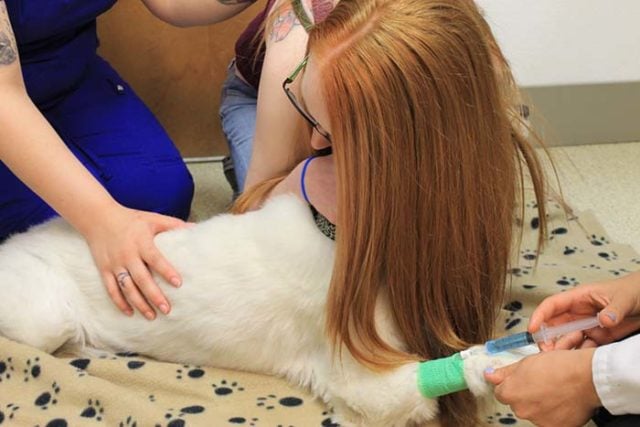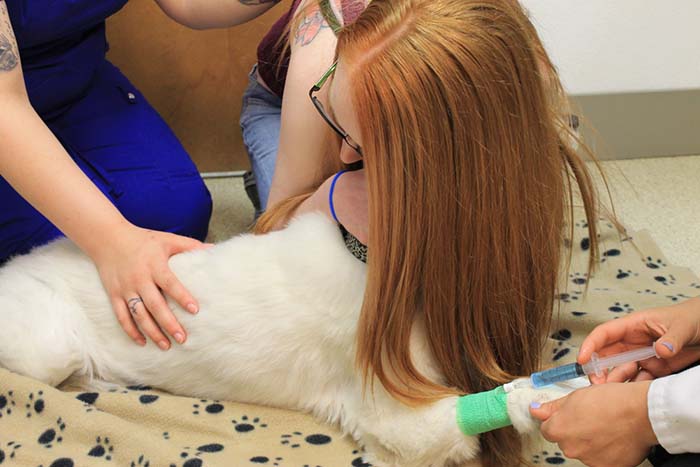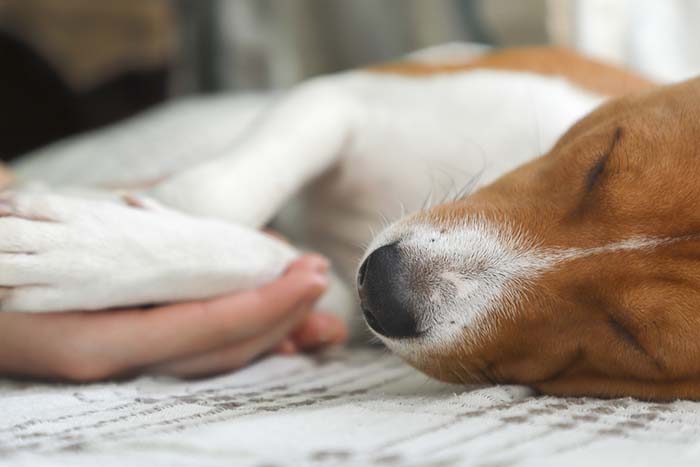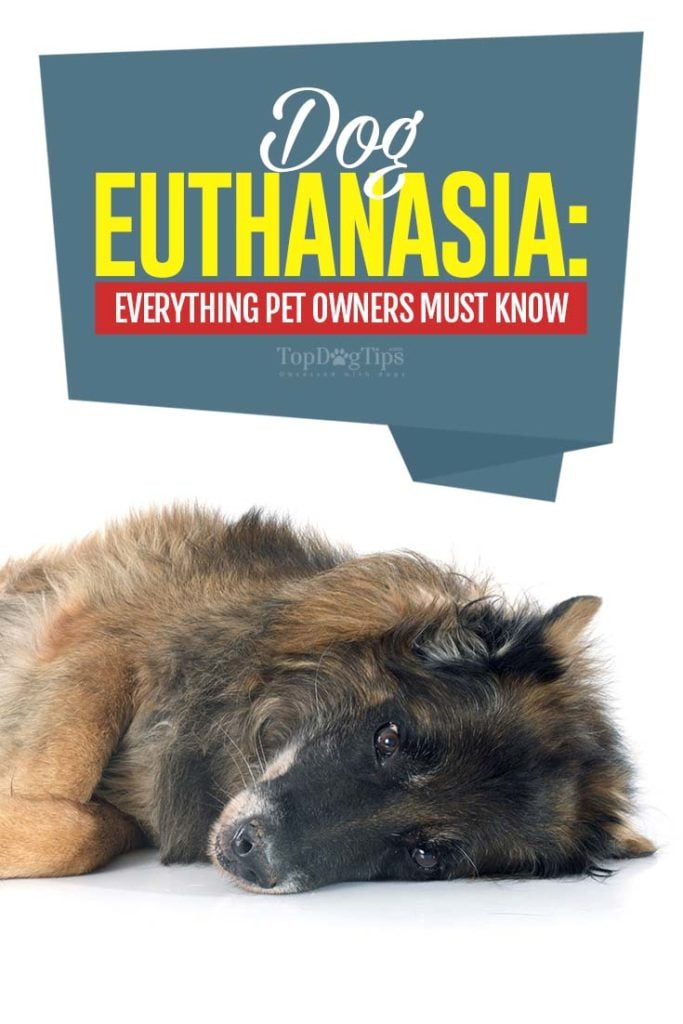
Table of Contents
It is often hard to realize that time has caught up with your pet, perhaps due to old age or illness, and your veterinarian wants you to know what options for your dog’s end-of-life care are available. Dog euthanasia is likely to be suggested, but before you make your final decision, a few things must be considered.
Considering Euthanasia
The idea of euthanizing your dog may catch you off guard when you were expecting the opposite – a type of treatment that can bring you back his most joyful years. It's a nerve-wracking decision: how do you know when it's time to put your dog to sleep as opposed to keep fighting whatever it is that prevents your Fido from living a full life?
In the majority of cases, when recommended by a vet, dog euthanasia is one of the best options to allow your pet to end the life that's been causing him pain and distress, and is likely to be more humane than allowing the dog to continue suffering. Despite what people think of PETA's practices, putting a dog to sleep is considered a very gentle and painless process with the best of intentions.
You already know what euthanizing a dog means. But more than that, it may be helpful for you to familiarize yourself with the dog euthanasia process, its basics and how the procedure works when to make that final decision, and how to comfort your dog during this time. There are also ways to ease your sadness.
ALSO READ: The Rainbow Bridge – What to Do When Your Dog Dies
Dog Euthanasia: What to Expect
How Does Dog Euthanasia Work?
Euthanasia is defined by the authority Merck Veterinarian Manual as “an easy, painless death.” It is often described as putting your dog to sleep because it's completely painless and stress-free for the pet. The idea is to relieve the pain, distress, and suffering that your dog is in and bring about a calm way for passing way.
When the time for dog euthanasia comes, your veterinarian will prepare a set of two shots. The first shot is a strong sedative. Your dog will experience falling into a gentle sleep that will continually deepen. Your dog will eventually cease to be aware of his surroundings.
During this time, your veterinarian may allow you and your family to spend a few moments with your dog. This will give you the time you need to say your final goodbyes.
Once you have been given a chance to be with your pooch for the final time, your veterinarian will get to the second shot—the final injection. In many cases, the drug pentobarbital is used intravenously. Pentobarbital will slow the dog's heart rate and rapidly bring on death.
You can find a veterinarian that will give you the option of having the dog euthanasia procedure at home. Having the option to be at home can relieve much of the anxiety for both you and your pet. Your dog will not have to be moved and will avoid the chaotic scene of a drive to the veterinarian’s office. Instead, your pet will be comfortable in his own place, in his bed, and surrounded by love and familiar smells and people.
Your dog will not experience any discomfort from the process of euthanasia.
Making the Final Decision

If you are considering dog euthanasia, remember that it is you who makes the final decision, not your vet. You should consider all of your options, including treatment and allowing your Fido to naturally die at home with the care of family. Your veterinarian should not pressure you into anything, but they will often give sound advice on what is considered best for the animal.
In the end, if your pet is suffering from pain and distress, dog euthanasia is the most humane of options, and your responsibility as the owner is to provide comfort and care “till the death do you two part.”
If you're having a difficult time making the decision, ask yourself some questions and consider what the future would be if you avoid dog euthanasia and let the pet live:
- Was your dog in an accident and is now suffering from severe and painful traumatic injuries, with a chance of recovery close to nil?
- Is the condition of your dog considered terminal, and are the pain and distress levels unmanageable for the pet?
- Is your dog no longer able to eat, drink, or move freely without pain due to any serious diseases, cancer, or old age?
- Does your dog have rabies?
- Is there any other way your dog is suffering, and there's no cure for it?
This is the time to be honest with yourself and look at the situation rationally. A pet owner wanting to spend more time with the dog should not be the first priority.
It's unlikely you will know when the “perfect” time for dog euthanasia. Your vet may warn you well in advance so you can prepare yourself emotionally and have a plan. Planning ahead can save your dog from unnecessary suffering.
IDEAS: 15 Ways to Spend Last Days With Your Dying Dog
Comforting Your Dog
As the time nears, you can spend the days comforting your dog. You can plan a special day, doing your dog’s favorite things as much as your pet's health allows. This can include some extra time outside, special treats or his favorite foods, or just extra time cuddling with your Fido. Making your pet comfortable in his final days will be good for your soul.
Read these stories of what other pet owners did for their dogs' last days:
- Here's a story about how Jon Katz created the perfect day for his dying dog
- A Buzzfeed article on how a woman Snapchatted her dog's last day
- And a heartwarming story about a family paying tribute to a three-legged dog
Creating the perfect last few days for your pooch is helpful for the dog and for you or your family. Being there with your Fido and staying through the dog euthanasia process is very important, too. Continue to pet and comfort your dog as he falls asleep. You will be the last thing that he sees.
Easing Your Sadness
Losing your best friend isn’t easy. Your dog had given you unconditional love for a number of years and had become a member of your family. Being aware of the possibility of dog euthanasia and preparing ahead of time can make things easier for you and your family.
If you have the opportunity to prepare, you may be able to take comfort in your strength to face pet death bravely with your dog head-on and not allow the pooch to continue in pain and suffering. In having time to prepare, ease your sadness by meditating and remembering all the times you and your dog have spent together.
Write down any special times that come to mind. Bring all those memories to the surface and do not store them away. Invite some of your and your dog’s friends over and have a memorial service. You can light candles, bring flowers, or even read a special poem. The healthy grieving process is important for people, and it helps to move forward.
A memorial service among friends and family is a traditional way to honor the memory of your dog and bring healing and closure to your own feelings. Being with your friends during this time will help you through the process of healing and ease your sadness.
Be sure to include your other pets in this process, as they, too, will need time to grieve and heal. Animals understand death and will miss their friend; saving a toy or blanket they can smell will allow them time to mourn.
READ THIS: 7 Tips To Help You Deal With the Loss of A Pet
Options After Dog Euthanasia
 You have a few options after dog euthanasia, and some of them can depend on what is legal in your jurisdiction. It’s probably hard to even think after your best friend has just passed, and the veterinarian is talking about what to do with your deceased pet. It's better to have made these arrangements prior to the procedure than after, as emotions will make it difficult to consider your options carefully.
You have a few options after dog euthanasia, and some of them can depend on what is legal in your jurisdiction. It’s probably hard to even think after your best friend has just passed, and the veterinarian is talking about what to do with your deceased pet. It's better to have made these arrangements prior to the procedure than after, as emotions will make it difficult to consider your options carefully.
You'll have the option to either bury your dog or have the dog cremated. In some states, it is legal to bury your pet in your backyard, while other states prohibit it. If you can't bury your pet in the backyard, you can do this at the pet cemetery. There are special pet caskets for dogs to bury your pooch in.
Your veterinarian is likely to suggest dog cremation services and for your dog’s ashes to be returned to you. You can then purchase any number of dog urns to keep the ashes in.
Many owners keep their dog’s collar as a remembrance token. There are even some jurisdictions in which you can arrange for you to be buried next to your dog. Choose an option that you feel is right for you and your family.
READ NEXT: Are Pet Caskets for Dogs Too Much? Do We Really Need Them?















